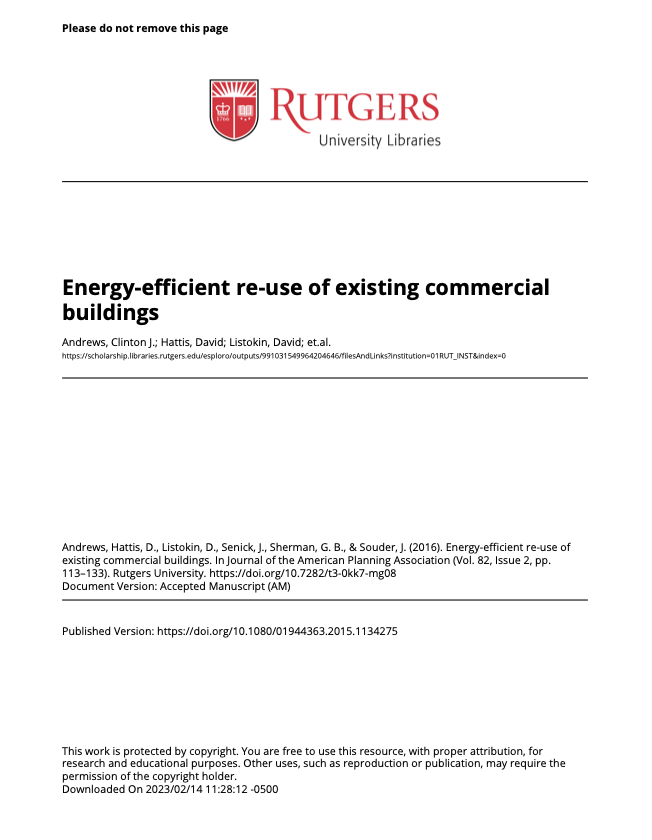Increased demand for urban living, financial incentives for redevelopment, and conducive planning regulations are leading to significant commercial building re-use. This trend represents an opportunity to upgrade the energy performance of the existing building stock in older, more walkable downtowns, and to achieve preservation goals. However, some advocates of building re-use resist imposing the cost of energy improvements on associated projects, while many energy efficiency advocates do not distinguish well between new and existing buildings. Building code officials experience this tension when reviewing improvements to existing buildings and many find that sections of the widely adopted International Energy Conservation Code (IECC) are pragmatically unenforceable. This paper characterizes the challenge using a regional survey of code officials and interviews with redevelopers, and explores how to improve outcomes. It tests policy alternatives on a representative sample of the U.S. commercial building stock and investigates how these policies might differentially affect the commercial building stock of contrasting towns (one compact and historic, the other sprawling) in the Greater Philadelphia region. Promising regulatory strategies include exempting smaller buildings and less energy-intensive occupancies and systems, and creating simple lookup tables that provide succinct guidance to redevelopers and code officials.
Energy-Efficient Reuse of Existing Commercial Buildings
Citation:
Clinton J. Andrews, David Hattis, David Listokin, Jennifer A. Senick, Gabriel B.
Sherman & Jennifer Souder (2016): Energy-Efficient Reuse of Existing Commercial Buildings,
Journal of the American Planning Association. 82(2) (2016 Special Issue on Historic Preservation): 113-133. https://doi.org/doi:10.7282/t3-0kk7-mg08
